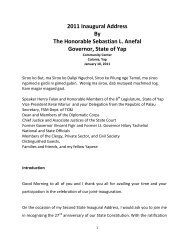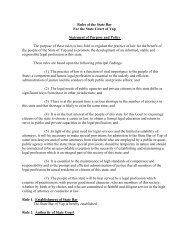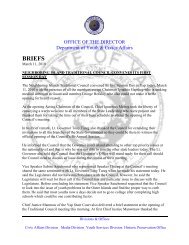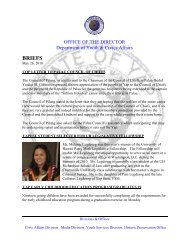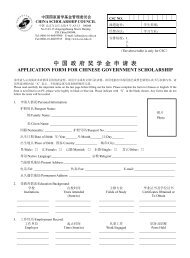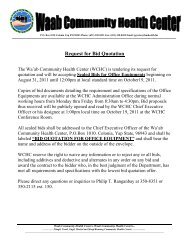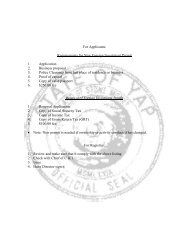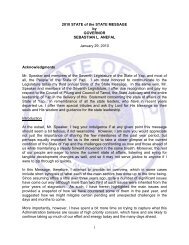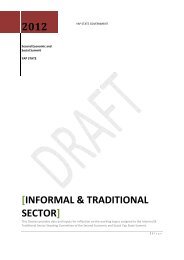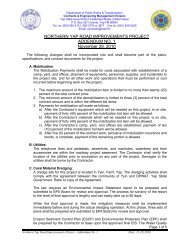RULES OF CIVIL PROCEDURE For the Trial Division of the Yap ...
RULES OF CIVIL PROCEDURE For the Trial Division of the Yap ...
RULES OF CIVIL PROCEDURE For the Trial Division of the Yap ...
Create successful ePaper yourself
Turn your PDF publications into a flip-book with our unique Google optimized e-Paper software.
(2) lack <strong>of</strong> personal jurisdiction;<br />
(3) improper venue;<br />
(4) insufficient process;<br />
(5) insufficient service <strong>of</strong> process;<br />
(6) failure to state a claim upon which relief can be granted; and<br />
(7) failure to join a party under Rule 19.<br />
A motion asserting any <strong>of</strong> <strong>the</strong>se defenses must be made before pleading if a responsive<br />
pleading is allowed. If a pleading sets out a claim for relief that does not require a<br />
responsive pleading, an opposing party may assert at trial any defense to that claim. No<br />
defense or objection is waived by joining it with one or more o<strong>the</strong>r defenses or objections<br />
in a responsive pleading or in a motion.<br />
(c) Motion for Judgment on <strong>the</strong> Pleadings. After <strong>the</strong> pleadings are closed — but early<br />
enough not to delay trial — a party may move for judgment on <strong>the</strong> pleadings.<br />
(d) Result <strong>of</strong> Presenting Matters Outside The Pleadings. If, on a motion under Rule<br />
12(b)(6) or 12(c), matters outside <strong>the</strong> pleadings are presented to and not excluded by <strong>the</strong><br />
court, <strong>the</strong> motion must be treated as one for summary judgment under Rule 56. All<br />
parties must be given a reasonable opportunity to present all <strong>the</strong> material that is pertinent<br />
to <strong>the</strong> motion.<br />
(e) Motion for a More Definite Statement. A party may move for a more definite<br />
statement <strong>of</strong> a pleading to which a responsive pleading is allowed but which is so vague<br />
or ambiguous that <strong>the</strong> party cannot reasonably prepare a response. The motion must be<br />
made before filing a responsive pleading and must point out <strong>the</strong> defects complained <strong>of</strong><br />
and <strong>the</strong> details desired. If <strong>the</strong> court orders a more definite statement and <strong>the</strong> order is not<br />
obeyed within 10 days after notice <strong>of</strong> <strong>the</strong> order or within <strong>the</strong> time <strong>the</strong> court sets, <strong>the</strong> court<br />
may strike <strong>the</strong> pleading or issue any o<strong>the</strong>r appropriate order.<br />
(f) Motion to Strike. The court may strike from a pleading an insufficient defense or any<br />
redundant, immaterial, impertinent, or scandalous matter. The court may act:<br />
(1) on its own; or<br />
(2) on motion made by a party ei<strong>the</strong>r before responding to <strong>the</strong> pleading or, if a<br />
response is not allowed, within 20 days after being served with <strong>the</strong> pleading.<br />
(g) Joining Motions.



